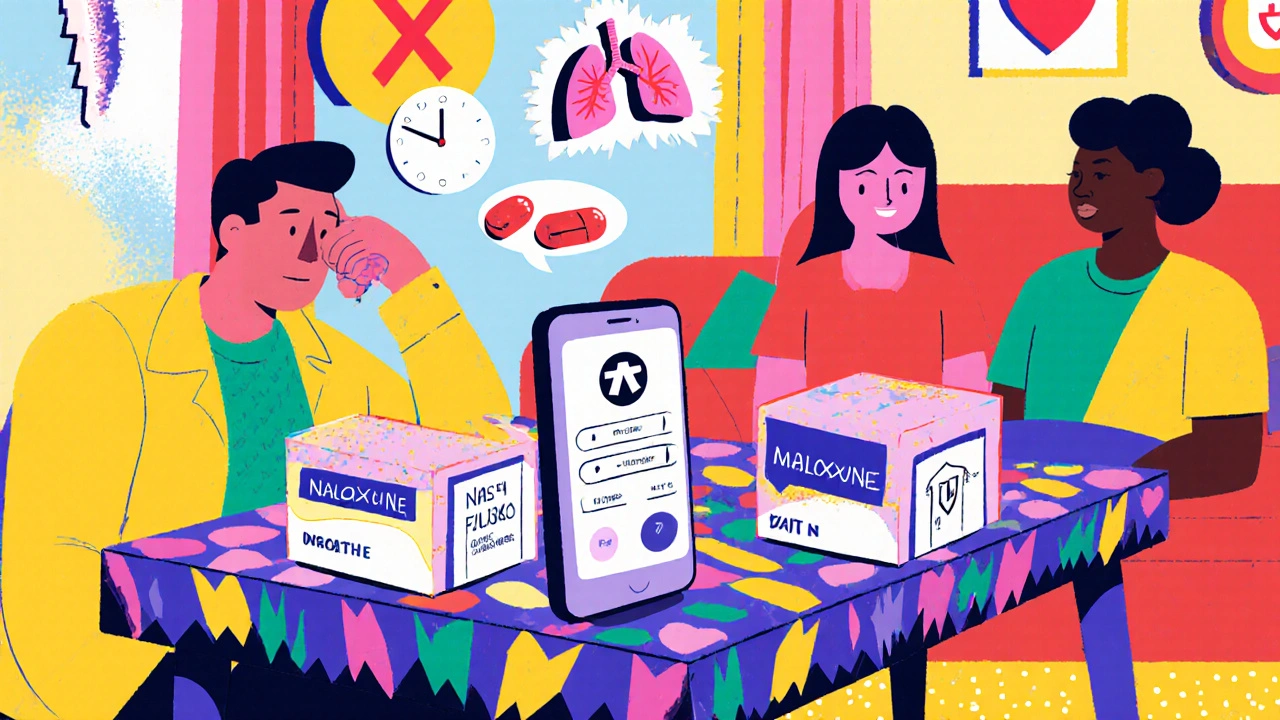Opioid Safety: Protect Yourself from Overdose, Dependence, and Harm
When it comes to opioid safety, the set of practices and awareness needed to prevent overdose, addiction, and accidental harm from prescription or illicit opioids. Also known as opioid risk management, it's not just about following your doctor’s instructions—it’s about understanding how these drugs affect your body, brain, and life. Opioids are powerful tools for pain relief, but they carry real risks. Every year, thousands of people unintentionally overdose because they didn’t know the signs, didn’t have naloxone nearby, or assumed their dose was "safe" because it was prescribed.
Opioid overdose, a life-threatening condition caused by too much opioid slowing or stopping breathing. Also known as respiratory depression from opioids, it doesn’t always happen with street drugs—many overdoses occur when people take extra pills for pain, mix opioids with alcohol or sleep aids, or don’t realize their tolerance has dropped after a break. Opioid dependence, a physical state where your body adapts to the drug and withdrawal symptoms appear if you stop. Also known as physical opioid tolerance, it’s not the same as addiction, but it often leads to it if not managed with care. If you’ve been on opioids for more than a few weeks, your body changes. Stopping suddenly can cause nausea, sweating, anxiety, and muscle pain. That’s why tapering under medical supervision matters.
Knowing how to use naloxone, a fast-acting medication that can reverse an opioid overdose in minutes. Also known as Narcan, it’s now available over the counter in many places and can be carried like an EpiPen. It doesn’t cure addiction. It doesn’t treat pain. But it can bring someone back from the edge of death. Keep it where you keep your pain meds. Teach your family how to use it. Ask your pharmacist for training—most will show you for free.
People often think opioid safety only matters for those with addiction. But it matters for anyone taking a prescription. It matters for caregivers managing a loved one’s pain. It matters for older adults on multiple meds, or people with chronic conditions who’ve been on opioids for years. You don’t need to be using heroin to be at risk. A single extra pill, a new medication interaction, or a change in liver function can turn a safe dose into a dangerous one.
That’s why this collection of articles gives you real, practical tools: how to track your meds, spot early signs of dependence, understand interactions with other drugs like benzodiazepines or alcohol, and use naloxone confidently. You’ll find guides on managing pain without relying solely on opioids, how to talk to your doctor about tapering, and what to do if someone stops breathing. These aren’t theoretical tips—they’re the kinds of things that save lives in real time.
Whether you’re taking opioids now, used to take them, or care for someone who does—this isn’t about fear. It’s about control. Knowing the facts means you can use these medications safely, or step away from them without panic. You’re not alone. And you don’t have to figure this out on your own.
Naloxone Readiness Plan: How to Keep Patients Safe on Opioids
A naloxone readiness plan saves lives by ensuring immediate access to this life-saving overdose reversal drug. Learn how to use it, where to get it, and why it’s essential for anyone on opioids - prescribed or not.
© 2025. All rights reserved.

